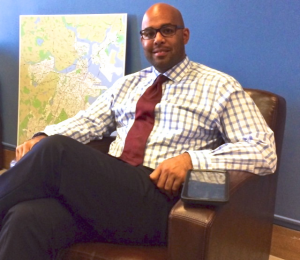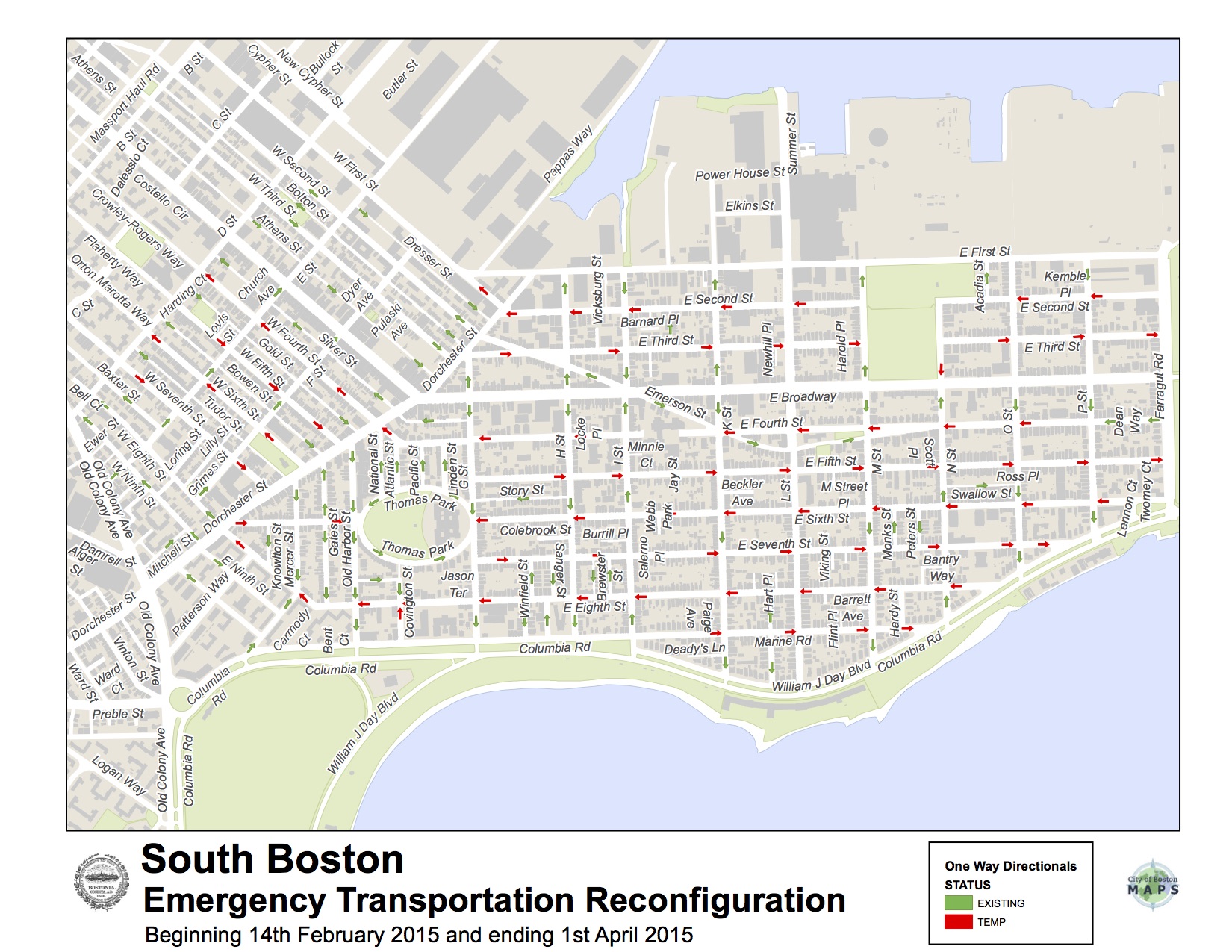
Turning two-way streets into one-way only throughways in South Boston may have struck some people as a haphazard or even desperate move. But something needed to be done about the mammoth snowbanks lining Southie’s streets, and those naysayers most likely don’t reside in the neighborhood.
How do we know? Because the idea for changing the traffic capacity of various streets came from residents, not City Hall.
Rather than air their snow removal grievances out on social media, residents tipped off the City to their own ways to alleviate vehicular congestion and parking woes. Some proved more fruitful than others but many constituted a step in the right direction.
This is exactly the kind of inspired effort Boston’s chief of Civic Engagement, Jerome Smith (also director of the Office of Neighborhood Services), was looking for from residents, and he was more than happy to run with it.
“It was pretty organic,” Smith told BostInno of the Emergency Transportation Reconfiguration (ETR). “It came directly from the residents.”

The ETR works quite simply: even numbered streets become one-way going westbound and odd numbered streets become one-way going eastbound. Main arterials continue allowing for traffic in both directions while streets already established as one-way continue on as usual.
Smith’s ONS oversees the mayor’s 24-hour hotline, which is where embryonic rumblings about an ETR were first heard. From there, it snowballed.
Many of the calls that began flooding in suggested action related to an ETR. Then, ONS staffers who were out in South Boston catering to the immediate winter weather needs of inhabitants began returning to the office with similar suggestions.
Eventually word reached Mayor Marty Walsh, who then tasked Smith with examining the feasibility of reversing the rules of the road for several oft-traveled streets.
“We looked at the bus routes and movement in the neighborhood,” said Smith. “The Boston Transportation Department has information about the main thoroughfares. And we sat down with the South Boston delegation.”
Though a sweeping street redirection plan like this has never before been instituted for emergency weather purposes only, it came as little surprise to municipal personnel that dwellers, especially Southie lifers, would seamlessly adapt.
That’s not to say everyone’s putting news of the reroutes directly into action. Smith admits that some people are more in need of reminders than others. He’s heard of a handful of instances in which people, by way of habit, began driving the wrong way down a street, which is why his office went canvassing the neighborhood, door-to-door, to alert everyone directly of the impending change.
“It’s a culture,” suggested Smith. “You live in Southie for 25 years and then there’s a sign up,” that prohibits people driving in a direction that some have for most of their lives.
With the South Boston ETR considered a success, it will remain in place until April 1, and in the meantime, Smith and his City Hall constituents will study the practicality, or lack thereof, of implementing a similar ETR in other communities.

South Boston, though, is a case study of the success seen by using a gridded street plan. More than any other neighborhood, Southie’s streets run perpendicular to each other as opposed to the seemingly nonsensical arrangement seen pretty much everywhere else in the city.
It was easier, then, for streets and signs to be labeled and relabeled for the ETR as well as the relocation of bus stops. The rest of the neighborhoods will be considered on a case-by-case basis.
More than anything, the South Boston ETR is not a model for how cities can realize and achieve advantageous modifications at the street level as much as it is for civic engagement.
Smith was expecting some sort of negative feedback, the kind that usually accompanies rearrangements of his magnitude, but received very little of it. In fact, the expediency in which ONS was able to engage with residents, along with the face-to-face contact, rendered almost universally positive feedback from locals.
Quite simply, the ETR has been deemed a “home run” for residents and should now be referenced as a model for how city governments can listen and learn from the governed.
“What I like is that I can take the ideas that come from the call center,” said Smith, “and bring [them] to other cabinet and department heads.” This is where change is catalyzed.
Smith wants everyone to remember, too, that just because South Boston is the subject of an uncanny solution to a growing snow problem doesn’t mean that every other neighborhood is being neglected. Boston is currently in a full-scale snow removal phase that includes the welcome addition of snow melters, plows, trucks and sand from neighboring states.
Mayor Walsh has reiterated in his snow-related press conferences that every single Boston street will be tended to. And if all goes according to plan, none will have to be reconfigured.

